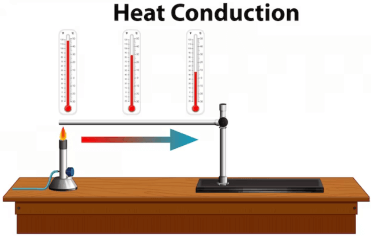Question
a.
6.84W
b.
7.34W
c.
4.54W
d.
5.47W
Posted under Heat Transfer
Interact with the Community - Share Your Thoughts
Uncertain About the Answer? Seek Clarification Here.
Understand the Explanation? Include it Here.
Q. A rod of 10 mm square section and 160 mm length with thermal conductivity of 50W/m K protrudes from a furnace wall at 200 degree Celsius with convective coefficient 20 W/ square m...
Similar Questions
Explore Relevant Multiple Choice Questions (MCQs)
Q. A fin protrudes from a surface which is held at a temperature higher than that of its environment. The heat transferred away from the fin is
View solution
Q. The value of correction length for equilateral fin is
View solution
Q. The parameter m = (h P/k A C)^1/2 has been stated to increase in a long fin. If all other parameters are constant, then
View solution
Q. The relevant boundary conditions in case of heat dissipation from a fin insulated at the tip are
View solution
Q. The temperature distribution in case of fin insulated at the tip is given by
View solution
Q. The rate of heat transfer from the fin in case of fin insulated at the tip is
View solution
Q. “Fin is insulated at the tip”. What does that mean?
View solution
Q. Find the heat transfer rate from a hot surface for 6 fins of 10 cm length? The base temperature of the fin is maintained at 200 degree Celsius and the film is exposed to a convection environment at 15 degree Celsius with convective coefficient 25W/square m K. Each fin has cross-sectional area 2.5 square centimeter and is made of a material having thermal conductivity 250W/m K
View solution
Q. An electronic semiconductor device generates 0.16 k J/hr of heat. To keep the surface temperature at the upper safe limit of 75 degree Celsius, it is desired that the heat generated should be dissipated to the surrounding environment which is at 30 degree Celsius. The task is accomplished by attaching aluminum fins, 0.5 square mm and 10 mm to the surface. Work out the number of fins if thermal conductivity of fin material is 690W/m K and the heat transfer coefficient is 45k J/square m hr K. Neglect the heat loss from the tip of the fin
View solution
Q. A rod of 10 mm diameter and 80 mm length with thermal conductivity 16W/ m K protrudes from a surface at 160 degree Celsius. The rod is exposed to air at 30 degree Celsius with a convective coefficient of 25W/square m K. How does the heat flow from this rod get affected if the same material volume is used for two fins of the same length? Assume short fin with insulated end
View solution
Q. Two rods A and B of the same length and diameter protrude from a surface at 120 degree Celsius and are exposed at air at 25 degree Celsius. The temperatures measured at the end of the rods are 50 degree Celsius and 75 degree Celsius. If thermal conductivity of material A is 20W/ m K, calculate it for B.
View solution
Q. An centrifugal pump which circulates a hot liquid metal at 500 degree Celsius is driven by a 3600 rpm electric motor. The motor is coupled to the pump impeller by a horizontal steel shaft of dia 25 mm. Let us assume the motor temperature as 60 degree Celsius with the ambient air at 25 degree Celsius, what length of shaft should be specified between the motor and the pump? It may be presumed that the thermal conductivity of the shaft material is 35W/m K, and that the convective film coefficient between the steel shaft and the ambient air is 15.7W/square m K
View solution
Q. The utility of fin in dissipating a given quantity of heat is generally assessed on the basic of how many parameters?
View solution
Q. A copper steel rod (k = 55 W/m degree) has been attached to a plane wall which is maintained at a temperature of 350 degree Celsius. The rod is 8 cm long and has the cross-section of an equilateral triangle with each side 5 mm. Determine the heat dissipation from the rod if it is exposed to a convection environment at 25 degree Celsius with unit surface conductance 100 W/m² degree. Consider end surface loss to be negligible
View solution
Q. For an infinitely long fin, the efficiency of fin is given by
View solution
Q. For a fin of finite length with an insulated end, the fin efficiency is given as
View solution
Q. For an infinitely long fin, the effectiveness of fin is given as
View solution
Q. For a straight rectangular fin of thickness δ and width b, choose the correct option
View solution
Q. “Effectiveness of fin is the ratio of the fin heat dissipation with fin to that of no fin”. Choose the correct answer
View solution
Q. Three fins of equal length and diameter but made of aluminum, brass and cast iron is heated to 200 degree Celsius at one end. If the fins dissipate heat to the surrounding air at 25 degree Celsius, the temperature at the free end will be least in
View solution
Recommended Subjects
Are you eager to expand your knowledge beyond Heat Transfer? We've handpicked a range of related categories that you might find intriguing.
Click on the categories below to discover a wealth of MCQs and enrich your understanding of various subjects. Happy exploring!








